This Morning Routine Checklist Will Change Your Life
How the Morning Routine Checklist Started
I finalized my morning routine in 2022—2 years after first learning about the idea and starting to figure one out for myself.
Why, you might ask, did I start by telling you that? Because I remember the exact moment that it hit me—November 9, 2020, to be exact. How do I remember that? Because sometimes in life, every once in a while, new information comes into your life that suddenly changes everything. Even if it takes years to become apparent.
It was the moment that Tim Ferriss said, “If you win the morning, you win the day,” that I actually stopped mid-pushup and sat up. What the fuck did he just say? Rewind. Play. The idea of “winning the morning” was some sort of alien fantasy that I had never heard of before. You could win the morning?
I was lucky to just wake up with enough time to hammer down a bowl of sugar, err—cereal, before heading off to work in a frenzy. And most mornings, I didn’t even have enough time to eat. I was late for life.
Why This Morning Routine Checklist Post Exists (and Why It’s Insanely Intense)
Ever since adulting took over, I haven’t really had any obsessions. I had some things I enjoyed doing, but nothing that consumed me and my every waking thought. The reason this article exists, and is so insanely in-depth and detailed, is because it was my first adult obsession. Other than drinking buckets of all the leftover alcohol mixed together from a party I had just gotten drunk at for 20 Bucks, I can’t remember another time when my brain was so consumed by something. At least this obsession didn’t cause me to nearly vomit all over the place…multiple times.
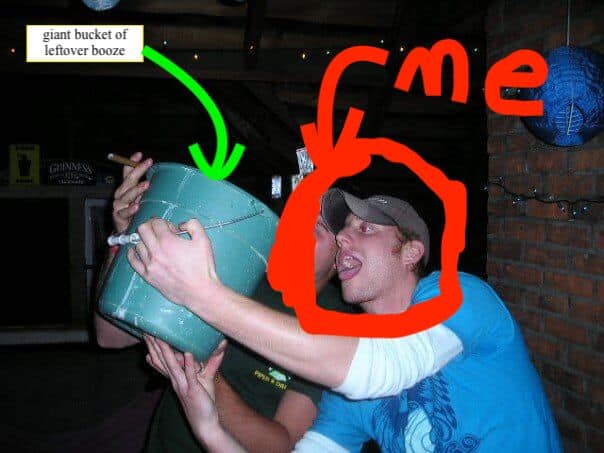
I obsessed over the perfect morning routine (in a good way, sort of) for years, and every book I read, podcast I listened to, or article I read gave me new insights or techniques to try on for size. Sadly, most of the sources just gave me general information about morning routines – as in, “You should meditate in the morning and exercise as well.” “Cold exposure and breath work could be beneficial.” “Sunlight helps set your circadian rhythm.”
Yea, but Why? When? How? In what order? For how long? What time is best? Where is best? Which exercises? Sunshine at what time? What time should I wake up? So. Many. Questions. I wanted answers. I wanted the exact template from these high performers. When I couldn’t get it from them, I figured I would make my own morning routine checklist and share it. So that’s how we got here.
Now, my morning routine is the single most valuable thing in my life, day in and day out.
Knowing what I know now, I was lucky to have found an obsession again. Obsession is necessary. At least for creating, doing, or being something meaningful. I won’t get into that here, but obsessions can take on many forms, some quiet, some loud, some simple, some complex, but ultimately obsessions excite and consume you driving you to be a better person. Hopefully.
For me, that was finding the perfect morning routine. A morning routine checklist.
Step 1: The Morning Starts at Night
Sleep is the single most effective thing we can do to reset our brain and body health each day.
—MATTHEW WALKER. Why We Sleep
It seems counterintuitive to start your morning routine checklist at night, but if you want to establish a morning routine, this is where you will need to start. In fact, this will likely be the most difficult step for many. It is so difficult because of one reason: discipline. Life happens. Things happen. You might want to stay up later to watch another episode, keep your late-night conversation going, or scroll on that device just a little longer.
But to “win the morning” you must first win the night.
Here’s the trick to allow for just enough freedom to get this done:
“Go to sleep and wake up at the exact same time every day” is the common thought around creating a sleep routine, but I recently heard something from Brad Merrill that completely changed the game for me: Wake up at the same time every morning, but go to sleep when you are tired. This simple adjustment has had a profound effect. You no longer have to force yourself to sleep. It eliminates sleep anxiety. It allows you to focus on when you get tired each night, and it varies. Your body is surprisingly good at dictating how much sleep you need. Knowing that you have to be up at 5 am, you pay attention and tune into your body more. This doesn’t mean you can binge just a few more episodes or scroll for a bit longer. You still need the discipline to go to sleep when you are tired, but this flexibility allows you just enough mental freedom.
Pro tip #1: Adults cycle through approximately 4-6 90-minute sleep cycles and the amount of time it takes you to fall asleep depends on a myriad of factors (like exercise, sunlight, stress)1, so plan accordingly to get the amount of sleep you require – most likely 7-9 hours of actual sleep.
#2: You’ll need a nighttime routine, preferably 30 minutes – 1 hour before sleep.
#3: Find a way to keep your mouth shut. You want to be breathing out of your nose. I used tape over my mouth for a very long time and now my mouth stays shut, and I believe nose breathing has contributed to my improved sleep and overall well-being. James Nestor explains this in his book Breath.
Pro tip #4: Your bed should only be used for sleep and sex. Maybe nighttime reading. That’s it.
Pro tip #5: Keep your room cool. The ideal temperature for sleep is around 65°F/18°C.
To successfully initiate sleep, your core temperature needs to decrease by 2 to 3 degrees Fahrenheit, or about 1 degree Celsius. For this reason, you will always find it easier to fall asleep in a room that is too cold than too hot, since a room that is too cold is at least dragging your brain and body in the correct (downward) temperature direction for sleep…A bedroom temperature of around 65 degrees Fahrenheit (18.3°C) is ideal for the sleep of most people.
—MATTHEW WALKER
Pro tip #6: Sleep in super darkness. I wear an eye mask. Yeah, so what?
This sleep mask is my favorite by far: Waoaw
Step 2: An Ex-Night Owler: What Time to Wake Up
I obsessed over this to a fault; tried every single wake-up time, down to the minute, from 4:56 am – 10:01 am. It was an unhealthy relationship I had with wake-up times. Then came a sudden realization: What time do I want to wake up so I can improve my life?
Of course, not everyone has this choice, but almost everyone does. If you are working a 9-5, what time could you wake up to invest in improving your well-being? If you start work earlier or have children, could you wake up an hour earlier if the likelihood of you feeling more clarity, focus, and energy is guaranteed? What could you cut out at night to get to bed earlier and wake up earlier?
You could do everything in the evening and that is perfect. But you probably wouldn’t be reading an article about the best morning routine checklist if you weren’t just a little bit curious.
As a lifelong night owl – a true night owl – the kind that has never, in their entire life, slept before midnight, ever – I will absolutely, 100% never tell you that you need to wake up at some insane hour like 5 am to win the morning. Never.
You need to wake up at 5 am to win the morning.
Okay, okay. I didn’t mean to break your trust, but this is a hard one for me. I was sincerely the most night-owly person I had ever known. Not trying to win any medals here, but my entire life, from relationships down to my career, was completely constructed around my being a night owl. So much so, that I never fully committed to a teaching career and instead used my skills in the less-respected realm of After-School Teaching because, hey, I just wasn’t a morning person. And school started early. Too early.
I had this voice in my head (still do) that would refuse to let me get up early, and then would be horribly sad when I slept in. Rinse and repeat. It was a real problem.
I would love to tell you that you can wake up anytime you feel like it, and even to respect your biological nature to be that night owl deep inside, but unless you are exactly where you want to be in life, have no major concerns, and distractions are non-existent, then truth is, you need to get up early, especially if you want to make self-care a priority.
There are two reasons for this: 1) You need to find a solid distraction-free window where you can truly focus on yourself, as well as, do your most important work. Your Deep Work 2) You need to have the willpower to sit down and do your distraction-free self-improvement and deep work for at least a couple of hours. Willpower wanes throughout the day. It’s sad but true. Projects that require deep mental clarity and focus get harder to start as the day goes on and life has already had its way with us.
As much as I’d hate to admit it, except for a select few, most people aren’t as productive or motivated to work on themselves or big projects at night because it gets increasingly harder to get started on those essential tasks after a full day. When it comes to engaging the mind in deep work and focused self-care at night, most minds aren’t having it.
If you work for someone else, then a lot is decided for you. You just need to decide how much time you need to be the best version of yourself: to optimize your body and mind. That’s where a morning routine checklist comes in.
Again, you have to find what works for you, but you must find when you can do your best, undistracted work.
4 am seems ridiculous. 5 am has worked for me. I also like 6-6:30 am, but find that anytime after that, the “magical time” when you are crushing life while the world is sleeping starts to dissipate. There is something psychologically empowering about knowing that you have done more than what most will accomplish in their day before they have even woken up—it’s empowering to have a beautiful system in place that fills you up every morning. There is something empowering that happens when you have worked on yourself and completed your most important tasks for the day and you look at the clock and it isn’t even lunchtime yet.
I only ask you this: have you sincerely taken the time to build a morning system that works perfectly for you and that you truly enjoy?
Step 3: Wake Up
Well, this one is horribly obvious: You need to get up. Immediately. Tom Bilyeu says, to get out of bed in less than 10 minutes. If I gave myself 10 minutes to lay in bed, I would never get up at 5 am. I know, I’ve tried. The second my “Morning Demon, Ernie” wakes up in my mind, I know I’m in trouble and need to get my ass up.
Try Mel Robins’ 5-Second Rule to get you up. Get up before you can think a thought.
My success of overcoming a lifelong addiction to night owlness is thanks to this little alarm clock right here. This alarm clock changed everything for me. There is something much easier about getting up when the room is lit up.
Over time, your body will start to slowly wake up before your alarm. Not always, but many times. It is quite fascinating.
Pro tip #1: Try to wake up without an alarm, if possible. Or, if you’re like me and find it impossible to wake up at 5 am without an alarm, use a sunrise alarm to slowly train yourself to wake up, not shocking your nervous system awake. Yeah, not a great way to wake up every single morning of your life, jolted awake by some annoying alarm sound.
Pro tip #2: Remember, we sleep in approximately 90-110 minute sleep cycles, so in an ideal world you’d be waking up at the end of a sleep cycle.
Pro tip #3: Never hit the snooze. Hitting the snooze sends your brain back into a sleep cycle so when you wake up 10 minutes later, parts of your brain are still “sleeping”, disrupting cognitive function.
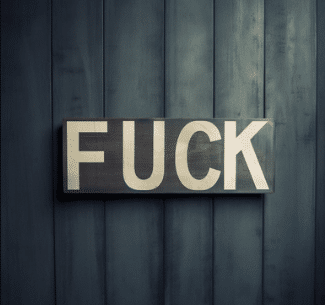
Step 4: Smile Immediately
It is hard to pinpoint the single most profound habit that has changed my life in a sea of simultaneous habit changes, but this one stands out, big time: smiling right when I wake up. It took months for it to stick, but when it did, I felt it. Several studies have shown that simply putting a smile on your face increases feelings of well-being and improved mood.2 Now imagine training yourself to do that the second you wake up. Yeah, pretty rad.
I’m serious. Smile. Your life will change because of it. As you walk to the bathroom, start thinking of something you are grateful for. Smile and gratitude: these two simple habits can truly change your life (I am getting chills typing this, in case you didn’t already know).
Starting your day with a smile on your face and then thinking of at least one thing you are grateful for goes deep into training your brain to pursue that all day, every day. Smiling matters. Gratitude matters.3 Start your day that way and watch your world start to change.
Pro tip: If you look at your phone right when you wake up, stop. Immediately.
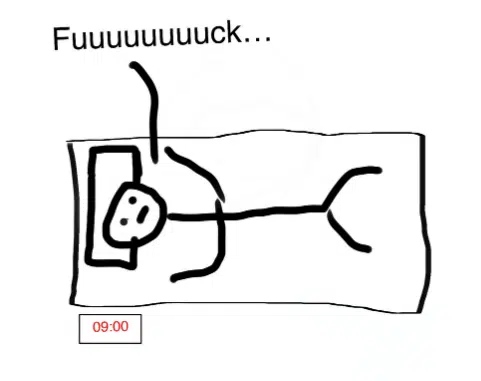
Step 5: Drink Water
Would you go 8 hours during the day without having any water? I hope not. Chances are you are waking up slightly dehydrated. We lose approximately 1 liter of water overnight through respiration.
Drink water when you wake up.
You can look into adding Real Salt or electrolytes to your water after consulting with your doctor. Personally, I drink about 500-750ml of water in the morning. Some days, I’ll add a dash of salt, especially if I’ll be sweating a lot. Hydration and electrolytes (not from sugary drinks) are essential for well-being and oftentimes overlooked. Although not supported by scientific literature, some estimates claim that 75% of Americans are chronically dehydrated.4 And dehydration can lead to a whole host of illnesses.
Pro tip #1: Have your water bottle filled and ready at your first morning routine stop.
Pro tip #2: You can also drink a full glass of water before bed to stay hydrated, although this risks having to get up repeatedly to use the bathroom. Your body will most likely adapt. I haven’t tried this.
Step 6: Brush the Wickets
After drinking your water, it’s time to brush those teeth of yours. Now, I’m assuming you are into health and well-being since you are here, which means you’ve heard the fluoride debate in toothpaste. I will tell you right now, I have never once in my entire existence met a dentist who told me not to use fluoride toothpaste. So, yeah, I’m sticking with the fluoride toothpaste. I love Hello Fresh.
If you are worried about fluoride, I get it.5 Me too. In that case, I would look into the fluoride levels in the water you are drinking and the possible benefits of a Reverse Osmosis Filtration System.
Brush after drinking your morning water because you don’t rinse your mouth out after brushing: you want the fluoride to sit on your teeth and do its job. Also, brush first thing in the morning, so the fluoride can work while you are carrying on with the next steps of the morning routine. You don’t want to eat or drink for at least 30 minutes after brushing.
Pro tip: Brush with your non-dominant hand because it’s fun to watch something so difficult become so easy.
Studies have found that brushing your teeth with your non-dominant hand while repeating a thought forces your brain to pay extra close attention to that message. Using your non-dominant hand makes your brain focus, so it zones in on everything that’s happening—including what you’re saying while you’re brushing your teeth. This effort makes you accurately remember the words and the feelings they evoke, because you paired it with this new physical habit (brushing your teeth with the wrong hand).
—MEL ROBBINS. The High 5 Habit
Step 7: The Daily Highlight
YouTuber, Ali Abdaal, talks about the Daily Highlight, where he writes down the one thing that he must complete that day and if he completes it, it will have been a successful day. Tim Ferriss has mentioned journaling daily on the question “What would make today great?”
Adapting those, I just focus on the ONE thing I have to do that day while I’m brushing my teeth (I have a post-it on my mirror that reads “Daily Highlight” as a reminder). I focus on how good it will feel to get it done—do that for about a minute, and for the other minute (you should brush your teeth for two minutes) I focus on my life goals. All of this helps because it starts my day with focused intention.
Step 8: The Seinfeld Splash
I wanna get up, let’s go, Baby! So the first thing I want…I want Sports Radio on, and I run the faucets and I start splashing my face with water like Mace in The Hustler…that’s how you face life…water, water.
JERRY SEINFELD. Episode 68 of Here’s The Thing with Alec Baldwin
This one is pretty straightforward: after you finish brushing your teeth, splash water on your face and look at yourself in the mirror. It wakes you up. And it’s empowering.
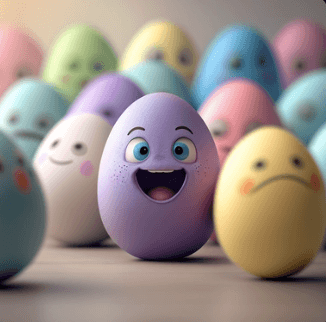
Step 9: Affirmations
Do affirmations work? Who knows. They didn’t do much when I was down in the dumps, only action changed that, but it is still a fiery way to start the day. Affirmations train me for positive self-talk, and I enjoy them.
I have no shame sharing my morning routine checklist, so here are the affirmations I read with water dripping down my face (Yes, I am aware that this sounds like a Gladiator getting ready to enter a Colosseum full of lions, and in a way, it is. And I like it):
- Smile and Gratitude all day.
- I am in perfect health. The Universe of Wealth is circulating in my life. Wealth flows to me in avalanches of abundance. All my needs, goals, and desires are met instantaneously. I am showing up and serving others with love, gratitude, laughter, kindness, energy, and knowledge. I am outstanding!
- Feel great all day. Be upbeat. Bring the energy.
- There is somebody out there who can benefit from what I know, do, and share.
- “My choices are made in a moment, but their consequences transcend a lifetime.” M.J. DeMarco, The Millionaire Fastlane
- What can I do today to (fill in your goal) by (fill in the date)? [Re: The Daily Highlight]
- Don’t Think. Do.
- Just Do. Always Do.
- I’ve got this! (I do this with my “power move”).
- High 5 myself in the mirror and say, “I love you, Scott. Let’s go!” as per Mel Robbins’s The High 5 Habit.
Discovered by Dr. Lawrence Katz, a neurobiologist and researcher at Duke University, neurobic interventions are one of the easiest, most powerful ways to create new pathways and connections in your brain. In a neurobic exercise, a routine activity (let’s say, looking at yourself in the mirror) is paired with two things: (1) something unexpected that involves your senses (like high fiving that mirror) and (2) an emotion you’d like to feel (like celebration). Neurobic exercises make your brain snap into attention. The act creates a kind of “brain fertilizer” that makes your brain learn new habits faster. This heightened state creates new nerve connections in your brain that connect the action—which was once something routine (high fiving other people), but when done in an unexpected way (high fiving yourself), puts your brain on alert—with the emotion you’d like to feel.
—MEL ROBBINS
Pro tip: Maybe having clear intentions and repeating affirmations that are tied to powerful emotions does reprogram your subconscious. Do I know this for sure? Absolutely not. But I know how I feel, and that’s good enough for me.
A large body of literature; however, demonstrates that a class of interventions called self-affirmations have benefits across threatening situations; affirmations can decrease stress, increase well being, improve academic performance and make people more open to behavior change.6
Step 10: Make Your Bed
If you want to change the world, start off by making your bed.
—NAVAL ADMIRAL WILLIAM MCRAVEN. Make Your Bed
Make your bed. Organize where you sleep, your workspace, and your life. You’ll feel better. Does it give you a small, easy win that perpetuates other, bigger wins? Maybe. I just do it because I feel better when things are tidy and I am (mostly) organized.
Step 11: Exercise
Exercise is the single most effective thing you can do to change your life and feel better. It is everything. It is, what I call, a Waterfall Habit: once you start to exercise regularly, other really good habits start to flow into your life, and more easily. You become more conscious of eating healthy and sleeping better. Your mood changes – you feel good. Your energy levels increase. You are less stressed and therefore kinder. The waterfall spills over.
Exercise every single day.
Yes, every day. Why? You need to make daily, deliberate movement a habit, and exercising 3-4 times a week leaves too much room for failure and you are constantly running into friction of having to restart. If you still aren’t convinced, let me ask you, how has not working out daily worked out for you so far? Probably not good. Inconsistent at best. Starting, stopping, starting, stopping. Always wishing you would exercise more. Well, here is your answer: do it every day.
You don’t have to run a marathon each day, but you need to schedule deliberate movement so it becomes a lifelong habit.
Here are some of the benefits: Numerous studies have shown that maintaining a minimum quantity and quality of exercise decreases the risk of death, prevents the development of certain cancers, lowers the risk of osteoporosis and increases longevity,7 decreases symptoms of depression,8 reduces inflammation,9 increases BDNF and improves learning and memory.10
For me, exercise must come first thing in the morning, otherwise, it won’t get done. Figure out when exercise has to happen for you.
Here is my weekly exercise schedule:
- 3-days of Zone 2 Cardio (60-70% of maximum effort). Aim for around 150 minutes per week.
- 3 days of lifting-resistance training (45-60 minutes per session).
- Add in Sprints (like my life depends on it: 100% effort). I usually mix this in with a Zone 2 day: something like 3-4-minute sprints and 3-4-minute cooldowns. Repeat 4-5 times.
- 1 day of yoga and stretching (40-60 minutes).
- Evening walks of 1-3 miles with an audiobook when I have time (3-4 times a week). Or just walk 10 minutes after eating (I love walks).
That’s it.
Don’t complicate this. Personally, I hate the gym so I lift at home with limited gear. Find what you like, then do it.
Pro tip: If you don’t exercise regularly, then no morning routine will help you. Exercise improves mood, increases energy, focus, clarity, and helps improve sleep quality…if you take anything away from this article, you must start an exercise habit immediately.
Step 12: Read
Books are the cheat code to life. If you don’t read, I’m not sure how you found me or this article. You need to read. And a lot.
If you don’t have a natural inclination to read more, or you can’t find the time, then you must schedule time to read every day. I always listen to an audiobook while exercising. (If you don’t like coupling reading with exercising then you can move reading to after journaling, during a walk, or even while cooking.)

There are arguments to be made for reading as much as possible versus just reading and devouring a few books. I support both as long as you are reading and implementing what you are learning.
If you are just starting out reading, you should read as much as possible to 1) Find what you like to read, and 2) To fill your brain with a surplus of knowledge-dots, from some of the greatest minds, that you will be able to connect later as you continue to implement, grow, and improve.
Again, find what works for you. But I will say this, every single person that has achieved a decent level of success in life have all said that they read a lot and that it has been a cornerstone of their success.
Pro tip #1: Combine audiobooks with activities like walking, exercise, cooking, cleaning, and showering. You will be amazed at how many books you can read if you fill your downtime with reading and not, let’s say, mindless scrolling.
Pro tip #2: Read non-fiction in the morning. Read fiction at night.
Pro tip: Stop listening to podcasts. They are an overview of books and ideas. Read the books!
Pro tip #3: Check out my growing list of book summaries for some insights.
Step 13: Sunlight
The benefits of such sun exposure go beyond production of vitamin D and include other physiological responses to sunlight, including release of nitric oxide, production of beta-endorphin, and regulation of circadian rhythms—all important components of lifelong health and well-being.11
I live for sunlight. For me, it’s where life happens. But also it has incredible benefits that go well beyond Vitamin D.
Here are a few more of the benefits:
- Helps morning cortisol release making you feel more awake.
- Regulates the release of adenosine and melatonin, which in turn helps regulate your circadian rhythm.
- Helps increase focus throughout the day.
- Boosts immune function.
- Releases serotonin which improves mood.
When you get sunlight depends on when you wake up. If you are up at 5 am, get sunlight for 15-20 minutes after you complete your morning routine or a morning break. If you wake up later, get outside first thing and do your exercise with an audiobook outside in the early-morning sunlight.
Pro tip #1: Get outside in the morning and protect yourself later in the day.
#2: Aim for about 15 minutes of morning sunlight on clear days and 30 minutes on cloudy days.
#3: Couple this with exercise, meditation, grounding, and breathwork.
#4: According to the Environmental Protection Agency, Americans spend 90% or more of their lives indoors. Think that affects your health and mood? I do.

Step 14: Grounding
All studies discussed revealed significant physiological or clinical outcomes as a result of grounding…This body of research has demonstrated the potential of grounding to be a simple, natural, and accessible clinical strategy against the global epidemic of noncommunicable, degenerative, inflammatory-related diseases.12
I don’t have much to say here other than putting my feet on the grass in the morning feels really fucking nice. And there might be some benefits, too.
Step 15: Priming
This came from that time when I crossed paths with the Tony Robbins environment. (Does that happen to everyone who first enters self-improvement?) It wasn’t really for me, but I still walked away with a few activities that I found useful.
Priming was one of those things. I downloaded a Priming audio onto my phone and listened to it each morning. Cutting out the breathing portion and opting for Wim Hof breathing was ideal. I no longer do Priming but still implement the concepts of gratitude, love, and visualization into areas of my life.
About Visualization: It has its place. If you are curious to explore more, look into Joe Dispenza’s books or the WOOP Method. Personally, I don’t believe you can attract things into your life so much as you can take action and create opportunities for yourself that weren’t perceptible until you took the action. Yet, visualization can be a great tool for getting very clear on what it is that you want to achieve, how you will get there, the obstacles you will face, how you will overcome them, and even getting excited about the process of reaching your goal. I’m all about science-backed activities, and visualization isn’t fully convincing. Although, taking action is.
Pro tip: Here is the audio I used.
Step 16: Meditation
Meditation altered the course of my life forever. Period.
I honestly have no idea how I lived my life before November 9, 2020. No idea.
The ability to be consciously aware still blows my mind. It was as though another “Me” was born; another person who could actually hear the thoughts and see the actions of the other “Me”.
Gets me every time.
Here’s a great place to start if you are new and still trying to make it a habit:
- Headspace App will always have a soft spot for me. Andy was my first. He did alter the trajectory of my life.
- Calm App is full of a bit more variety, although the simple daily meditations felt more like instruction than sitting and focusing on my breath. Their selection of Sleep Stories and Soundscapes are wonderful, though.
- Waking Up App is the deep, philosophical side of meditation. I like it.
After you get comfortable a few months in, it’s time to remove the training wheels and go off on your own. The guided apps are great to start but don’t rely on them. (And beware of the potential distractions inherent in the use of the app and phone itself.)13
Here are some advanced options:
- Transcendental Meditation: This is what I do – 20 minutes twice a day (although, I don’t like that you have to pay for entry). Some evenings, instead of round two of TM, I will replace it with the “Tuning Into New Potentials” meditation from Joe Dispenza’s Becoming Supernatural (Yes, I visualize myself being super-duper awesome sometimes.) He also has some “Quantum Field” meditations.
- 1-Hour Meditation: Well, this one takes some practice
- Evening Meditation
- Walking Meditation
- Eckhart Tolle Meditations from The Power of Now
- Zen Meditation
The list is long, and as much as I want this article to provide you with exactly what to do, this one you will have to explore on your own. Enjoy the process of finding what meditation/mindfulness technique works for you – it’s a journey in and of itself.
Pro tip: Meditating immediately after exercise helps us train our brain to move from Beta Brainwaves to more relaxed Theta Brainwaves.14 This training simulates the reality and chaos of life and trains us to move from stressful feelings to feelings of awareness and calm with ease.

Step 17: Thinktation
This was adapted from Tom Bilyeu and a section from the book Think and Grow Rich that often gets overlooked but has stuck with me ever since I read it:
In his laboratory, he had what he called his “personal communication room.” It was practically sound proof, and so arranged that all light could be shut out. It was equipped with a small table, on which he kept a pad of writing paper. In front of the table, on the wall, was an electric pushbutton, which controlled the lights. When Dr. Gates desired to draw upon the forces available to him through his Creative Imagination, he would go into this room, seat himself at the table, shut off the lights, and CONCENTRATE upon the KNOWN factors of the invention on which he was working, remaining in that position until ideas began to “flash” into his mind in connection with the UNKNOWN factors of the invention.
—NAPOLEON HILL. Think and Grow Rich
Thinktation is a method that utilizes the relaxed state of calmness and clarity that results from deep meditation, allowing you to reap the benefits of creativity and problem-solving. (This is why it immediately follows your meditation practice.)
Studies suggest that there is a “creative sweet spot” just before we fall into onset sleep.15 There is something magical that happens during moments of complete stillness and boredom.
It is rumored that Einstein took frequent naps while sitting in a chair holding a steel ball in either hand. As he would drift off to sleep he would enter this creative sweet spot just before sleep and the steel balls would clank to the floor shocking him awake. He would furiously write down all of the thoughts and solutions he had just accessed.16
Pro tip #1: Make sure to have a problem in mind that you want to Thinktate about before you sit down to meditate.
Pro tip #2: Have a pen and paper nearby (or a way to take notes).
Step 18: Wim Hof Breathing
Actually, any breathwork fits here nicely. But I prefer Wim Hof breathing since the cold shower is to follow.
Does it work? Breathwork has been used for thousands of years and has come into fashion more recently. Yogic breathing has been shown to have both physiological and psychological benefits. It also helped to reduce fatigue, anxiety, and other emotional responses in those with cancer and cardiovascular disease.17
How about Wim Hof breathing? Studies have shown that participants who were trained in the Wim Hof method voluntarily activated their Autonomic Nervous System and their innate immune response.18 Other research concluded that “trained subjects practicing the learned breathing exercises exhibited higher levels of lactate and pyruvate compared with a control group who did not practice any exercise, and concentrations of these metabolites correlated with the profoundly enhanced levels of the anti-inflammatory cytokine IL-10.”19
Put another way, breathwork had anti-inflammatory effects, and that’s a really good thing.
Step 19: Cold Shower
It’s funny, there is a mountain of growing literature and discourse regarding the health benefits of cold exposure. I don’t care about any of that. The reason I take a cold shower every morning is simply because it is the single most difficult thing I do each day. Nothing even comes close. And if I can conquer my screaming mind each morning, then everything else becomes that much easier.
There are a lot of science-backed benefits of cold showers.20
In her book, Dopamine Nation, Anna Lembke talks about the benefits of cold exposure on our, well, dopamine.
Pro tip: Don’t go jumping in screaming and shouting. Ease into it, calmly, focusing on your breathing. Accept it. Like life, it’s all training.
Step 20: Journaling (Read If You Didn’t Earlier)
If you didn’t listen to an audiobook while exercising, here would be a good time to sit down and read. Before or after journaling works great.
I wrote a post about journaling and how to get started here.
As with meditation, you really have to play around with what journaling method works for you. You’ll probably want to avoid typing though, as there is something more profound that happens with pen-to-paper.
Here are some journaling methods:
- My FREE Journal PDF
- Morning Pages
- Morning Pages simplified to one page
- The Bullet Journal Method
- Love Letter Journaling
- Healing Journaling
- Creative Journaling
- Gratitude Journaling
- Problem-Solving Journaling
- Vision Board Journaling
- Night Journaling
Needless to say, there are a lot of options out there. Just keep it simple. Do whatever style of journaling that keeps you coming back consistently enough to reap the benefits.
Personally, I have found Morning Pages or Stream of Consciousness journaling beneficial for my overthinking brain. It works wonders for problem-solving. Many times the answer is just sitting there, waiting to be discovered.
The Bullet Journal is something new I’m trying on for size, and it seems that once you get the hang of the basics, it might live up to its hype. It is open enough to let you play, explore, plan, organize, and reflect all in one place. So we’ll see.
Pro tip: Journaling in the morning helps you get all those ideas and thoughts you have out of your head and onto paper. It helps you see what is actually running through your mind all day. And it helps you plan.
Step 21: Deep Work
Simply, get to work.
I once caught a clip of Alex Hormozi talking about the most effective morning routine stating, “The best morning routine is the one that closes the gap between waking up and getting to work.” And that hit me hard. It’s actually what woke me up from my morning-routine checklist addled obsession.
Eat That Frog says to do the hardest thing first – the most important thing – the thing that moves you closer to where, and who, you want to be.
Cal Newport, in his book Deep Work, outlines various approaches to achieving deep work, but the message is clear: designing a work life around flow that is produced when engaged in deep work is the key to life satisfaction and meaning.
Deep work, even for the best-of-the-best, maxes out at around 4 hours. Find those 4 hours.
As a night owl, I would say do your deep work whenever you are most productive, probably in the evening.
For an ex-night owl, well, you probably already know what I would say.
And as a human who understands life, do deep work whenever is best for you. But do deep work. Set deadlines, remove all distractions, and focus. You’ll be happy you did.
Pro tip #1: Use headphones that block out the world and some classical music guiding you gently toward all of your dreams.
Pro tip #2: Read Deep Work and The ONE Thing together.
Step 22: Fasting
If you still believe in science (which you should), then a healthy breakfast is an extremely important meal of the day, if not the most important. “Scientific studies suggest that making a healthy breakfast is related to a greater intake of nutrients in the total of the day, better coverage of the nutritional recommendations and better quality of the whole diet. It is also associated with better body weight control and healthy cardiometabolic risk indicators, both in children and adults. Breakfast has also been related to improvements in attention and cognitive function in all age groups, both in acute, chronic and intervention studies.”21
With that said, I fast and eat my first meal around lunchtime. (This is absolutely not medical or nutritional advice.) I simply do this because it works for me. I feel more focused and productive with just me and my coffee.
Pro tip: If you make any changes to your diet, talk with your doctor to design a program that works best for you and your individual needs.

Step 23: Do Whatever Works for You!
Well, this article turned into a 7,000-word behemoth. Oops.
It’s ironic because all I really wanted to say is that having a simple morning routine that you enjoy waking up to and doing each day can change your life.
And…my life motto is “Simplify”. (So that would probably mean avoiding 7,000-word posts in the future. To be honest, it’s a newly adopted motto, anyway, and I’m clearly still adapting.)
All this was to say that I obsessed over having the perfect morning routine for years. I relentlessly searched for new elements I could add or try out and I’m glad I get to share my result with you. Let’s hope it helps you like it helped me.
Although this article is rather long, the routine itself is quite simple and takes about 2-2.5 hours. Ever since that Hormozi comment, my morning routine has been condensed to around 1.5 hours and that includes my daily exercise, which will never leave its morning slot.
Ultimately, it comes down to whatever works for you. Whatever you will stick to. Whatever fits your life and where you are heading. But maybe knowing why you should incorporate a morning routine into your life will help you get where you want to go. Hopefully, this morning routine will help get you there.
I believe it will.
My Morning Routine Checklist
9 – 10 pm: Screens off, daily reflection, next-day tasks, and time-blocking, warm shower, meditate, read, sleep (sleep time varies based on need).
5 am: Wake up. Smile and gratitude.
5 – 5:05 am: Drink water, brush teeth, daily highlight/life goals, splash water on face, affirmations.
5:05 – 5:10 am: Make bed.
5:10 – 6 am: Exercise with audiobook.
6 – 6:25 am: Meditation (Thinktation, if needed. I don’t do Priming anymore, and Wim Hof is only when I feel like it = 1-2 times a week, or a 1-minute version right before the…)
6:25 – 6:30 am: Cold shower.
6:30 – 6:35 am: Coffee (with MCT oil) or Tea (Matcha, Yerba Mate).
6:35 – 6:50 am: Morning Pages/journal check-in/daily plan/time-blocking (or straight to deep work).
6:50 – 9 am: Deep work, the most important thing, the toughest thing.
9 – 9:15 am: Break, sunlight, grounding (if possible).
9:15 – 11:15 am: Deep work.
11:15 am: Break-fast or do easier tasks until 12-1 pm depending on feel.
*Times might change—waking up at 6 am in the summer: it will allow for exercise, meditation, thinktation, sunlight, grounding, and breathwork all to be done together outside. Some sections might change, but the core remains the same.
Pro tip: Start slow and add elements over time. The key is to always do the things that you say you are going to do. You must build trust with yourself and to do that, you have to keep the promises that you make to yourself.
- https://www.ncbi.nlm.nih.gov/books/NBK526132/ ↩︎
- https://www.scientificamerican.com/article/smile-it-could-make-you-happier/ ↩︎
- https://www.sciencedirect.com/science/article/abs/pii/S0191886920302907 ↩︎
- https://pubmed.ncbi.nlm.nih.gov/32310416/ ↩︎
- https://www.ncbi.nlm.nih.gov/pmc/articles/PMC7230026/ ↩︎
- https://pubmed.ncbi.nlm.nih.gov/26541373/ ↩︎
- https://www.sciencedirect.com/science/article/abs/pii/S0378512212003015 ↩︎
- https://www.ncbi.nlm.nih.gov/pmc/articles/PMC474733/ ↩︎
- https://www.sciencedirect.com/science/article/abs/pii/S1521694220300218 ↩︎
- https://www.frontiersin.org/articles/10.3389/fnins.2018.00052/full?__s=xxxxxxx&utm_source=drip&utm_medium=email&utm_campaign=Dr.+Casey%27s+Kitchen%3A+Staying+Healthy+on+Vacation ↩︎
- https://www.ncbi.nlm.nih.gov/pmc/articles/PMC4536937/ ↩︎
- https://www.researchgate.net/profile/James-Oschman/publication/320608127_Electric_Nutrition_The_Surprising_Health_and_Healing_Benefits_of_Biological_Grounding_Earthing/links/5b9645c34585153a531992ce/Electric-Nutrition-The-Surprising-Health-and-Healing-Benefits-of-Biological-Grounding-Earthing.pdf ↩︎
- https://journals.sagepub.com/doi/abs/10.1177/01622439211049276?journalCode=sthd ↩︎
- https://nhahealth.com/brainwaves-the-language/ ↩︎
- https://www.science.org/doi/10.1126/sciadv.abj5866 ↩︎
- https://www.scientificamerican.com/article/thomas-edisons-naps-inspire-a-way-to-spark-your-own-creativity/ ↩︎
- https://www.ncbi.nlm.nih.gov/pmc/articles/PMC7336946/ ↩︎
- https://pubmed.ncbi.nlm.nih.gov/24799686/ ↩︎
- https://www.ncbi.nlm.nih.gov/pmc/articles/PMC7652234/ ↩︎
- https://jackcincotta.com/2020/03/21/turn-the-knob-on-blue-the-benefits-of-cold-showers/ ↩︎
- https://europepmc.org/article/med/30351152 ↩︎
If You Liked This Morning Routine Checklist Then…
Related Topics
*If you use the affiliate links in here a magic genie will suddenly appear in front of me granting me unlimited wishes, at which point I will then immediately wish for something like 100 billion dollars, a submarine, a funny hat, or something cool like that. So just assume that if you use the links to buy anything I make tons of money and become filthy rich. Besides this last statement, I practice radical honesty, and anything I ever recommend is something I stand by.









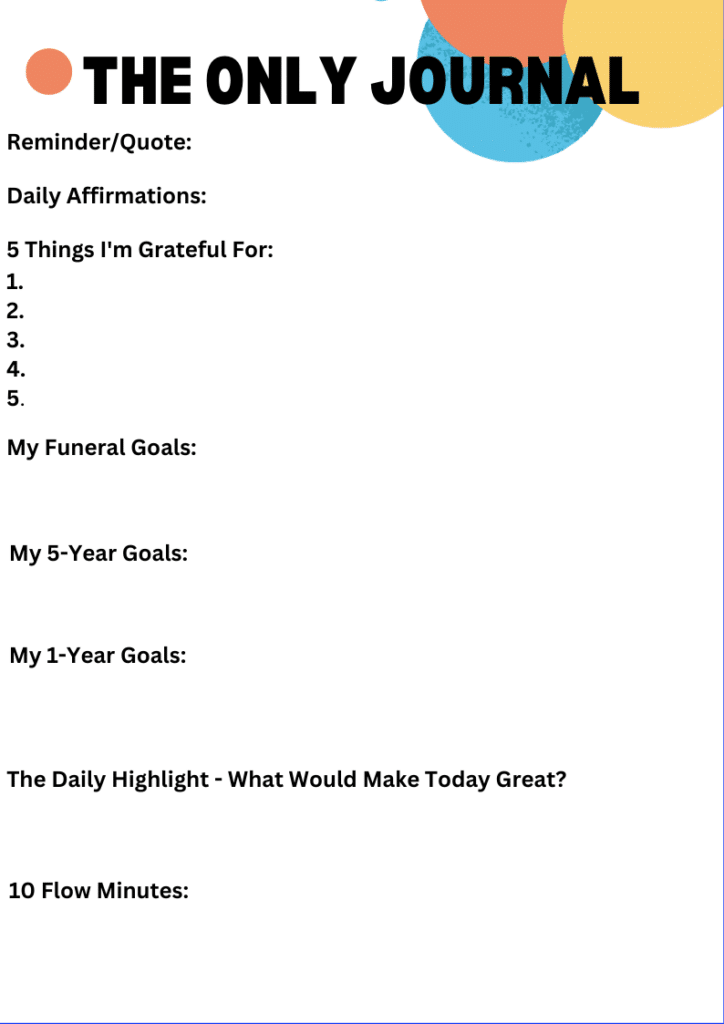
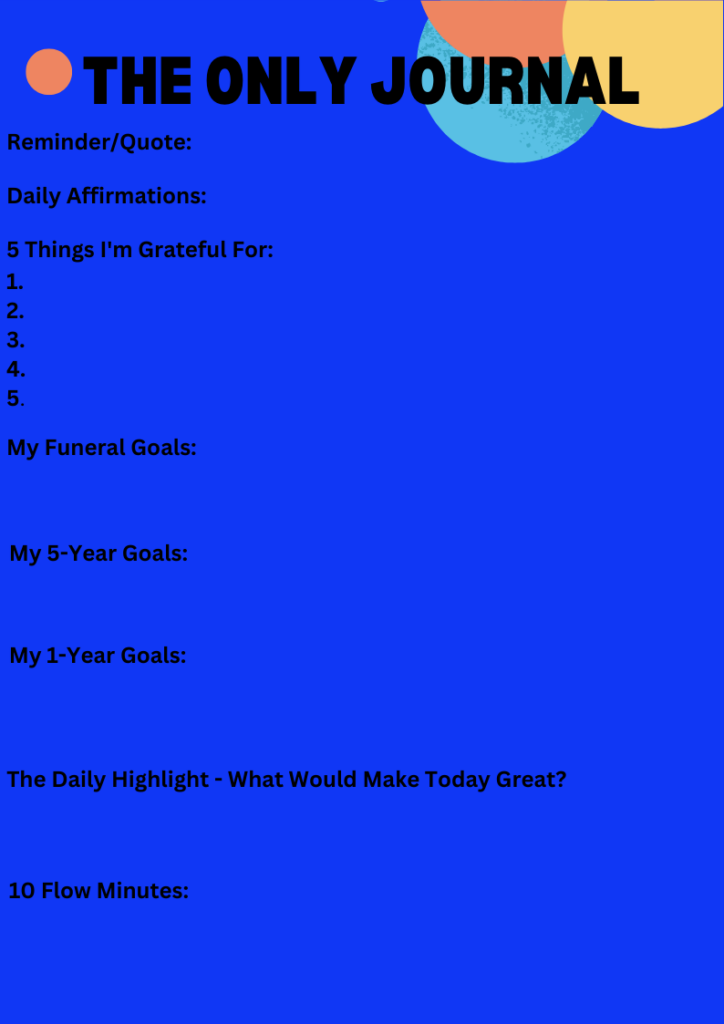
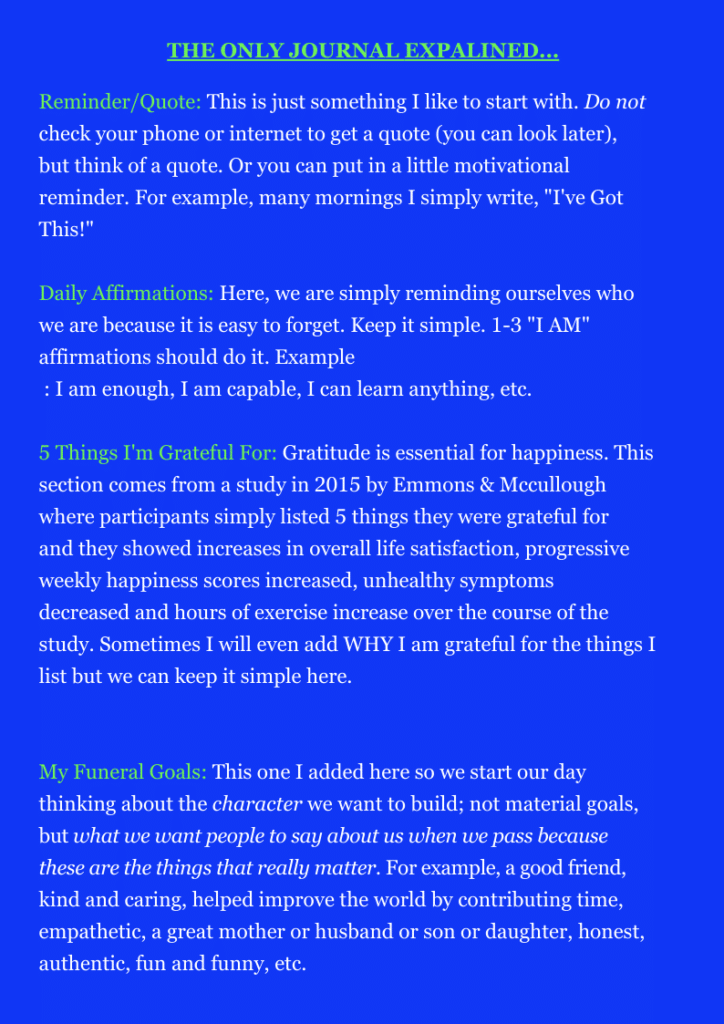
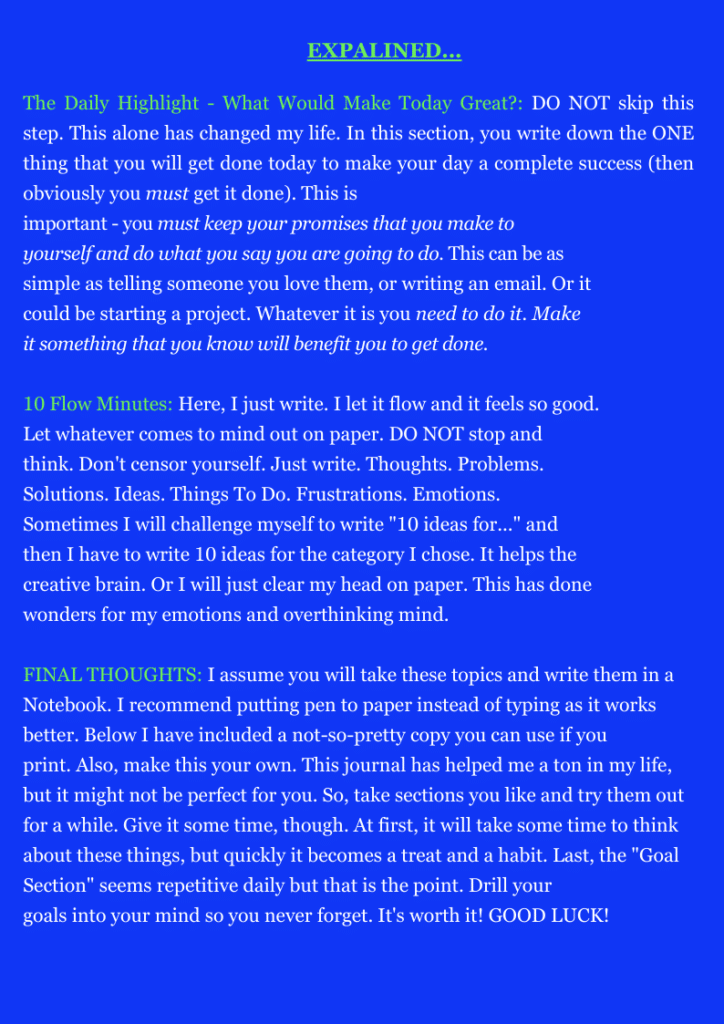






Loved this! Your work is part of “my reading” 🥰
I think you should have a “personal” intensive retreat…lol… someone pays you to come live with you ….lol! But they must be silent . oh..Be ” Scott “s Shadow” 😅😅😅 Retreat!
LOL…this might be the best idea I’ve ever heard! Having a type of “Routine Retreat” really isn’t a bad idea. It would give people a hands-on approach to figuring what works for them and how to create habits. Now you’ve got my wheels turning LOL! I’m really happy you enjoy my articles. I took a chance on writing and glad I did!